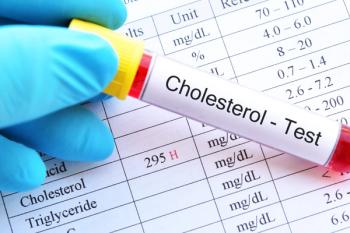
FDA Holds Competition for Opioid Overdose Smartphone Application
The 2016 Naloxone App Competition will create an application to link carriers of naloxone with those experiencing an opioid overdose.
The FDA recently announced the launch of a competition aimed at creating a smartphone application that could potentially reduce deaths associated with opioid overdoses.
The 2016 Naloxone App Competition calls computer programmers, public health advocates, clinical researchers, entrepreneurs, and innovators to create an application that can connect people experiencing an opioid overdose with a person who has a prescription for naloxone, according to the FDA.
The competition will be run by the FDA, the National Institute on Drug Abuse, and the Substance Abuse and Mental Health Services Administration. The program builds on the Department of Health and Human Services’ Opioid Initiative that aims to reduce opioid misuse and overdose.
A recent
“With a dramatic increase in the number of opioid overdose deaths in the US, there’s a vital need to harness the power of new technologies to quickly and effectively link individuals experiencing an overdose — or a bystander such as a friend or family member – with someone who carries and can administer the life-saving medication,” said FDA Commissioner Robert M. Califf, MD. “Through this competition, we are tapping public health-focused innovators to help bring technological solutions to a real-world problem that is costing the US thousands of lives each year.”
In 2014, there were approximately 2 million Americans who misused or were dependent on opioids, the Substance Abuse and Mental Health Services Administration reported. Overdose deaths related to prescription opioids increased to 28,000 in 2014, which is more than triple the number of deaths in 1999.
In most states, naloxone is only available through a prescription. However, some states have made it more accessible to first responders, community organizations, and the average person.
A report from the US Centers for Disease Control and Prevention found that the administration of naloxone by laypersons nearly tripled from 2010 to 2014. The goal of the competition is to connect people with naloxone with those experiencing an overdose.
Those entering the competition will be able to access resources about the opioid epidemic, formulations of naloxone, public health recommendations for safe and appropriate use of naloxone, and FDA guidance on mobile medical applications, according to the FDA.
A panel of members from the participating organizations will evaluate the submissions, and award $40,000 to the highest-scoring entrant.
“The goal of this competition is to develop a low-cost, scalable, crowd-sourced mobile application that addresses this issue of accessibility,” said Peter Lurie, MD, MPH, associate commissioner for public health strategy and analysis at the FDA. “Mobile phone applications have been developed to educate laypersons on how to recognize an overdose and administer naloxone, and to connect bystanders with individuals in need of other medical services, such as CPR. To date, however, no application is available to connect carriers of naloxone with nearby opioid overdose victims.”
Newsletter
Stay informed on drug updates, treatment guidelines, and pharmacy practice trends—subscribe to Pharmacy Times for weekly clinical insights.


















































































































































































































